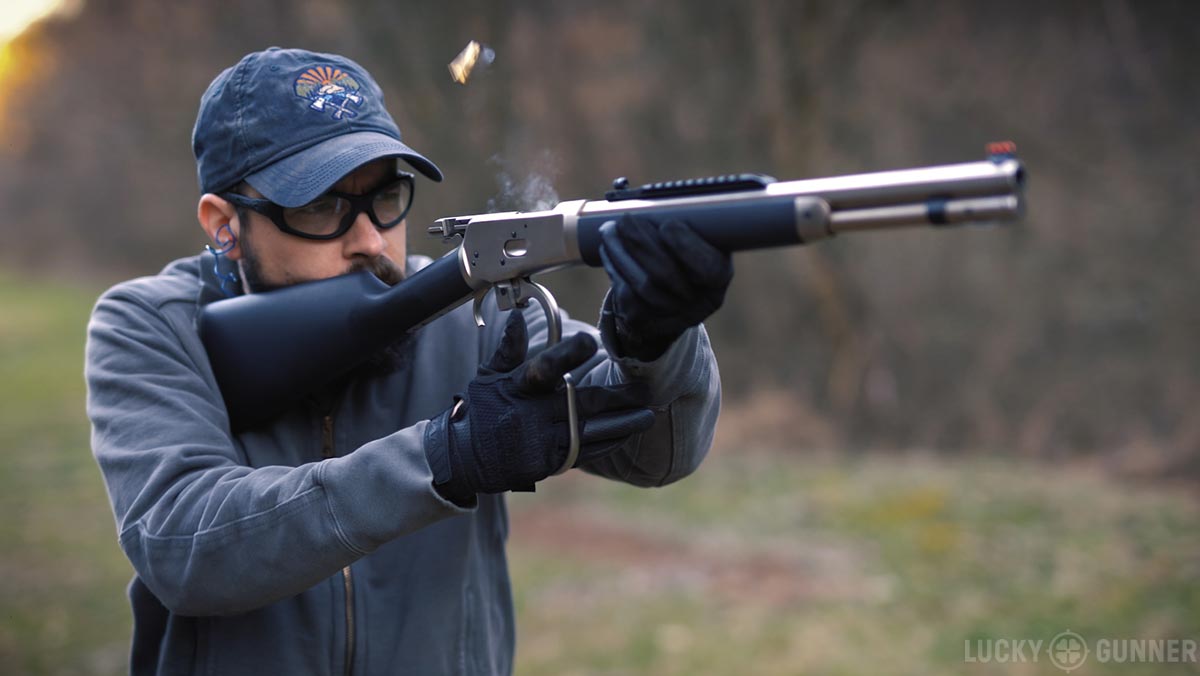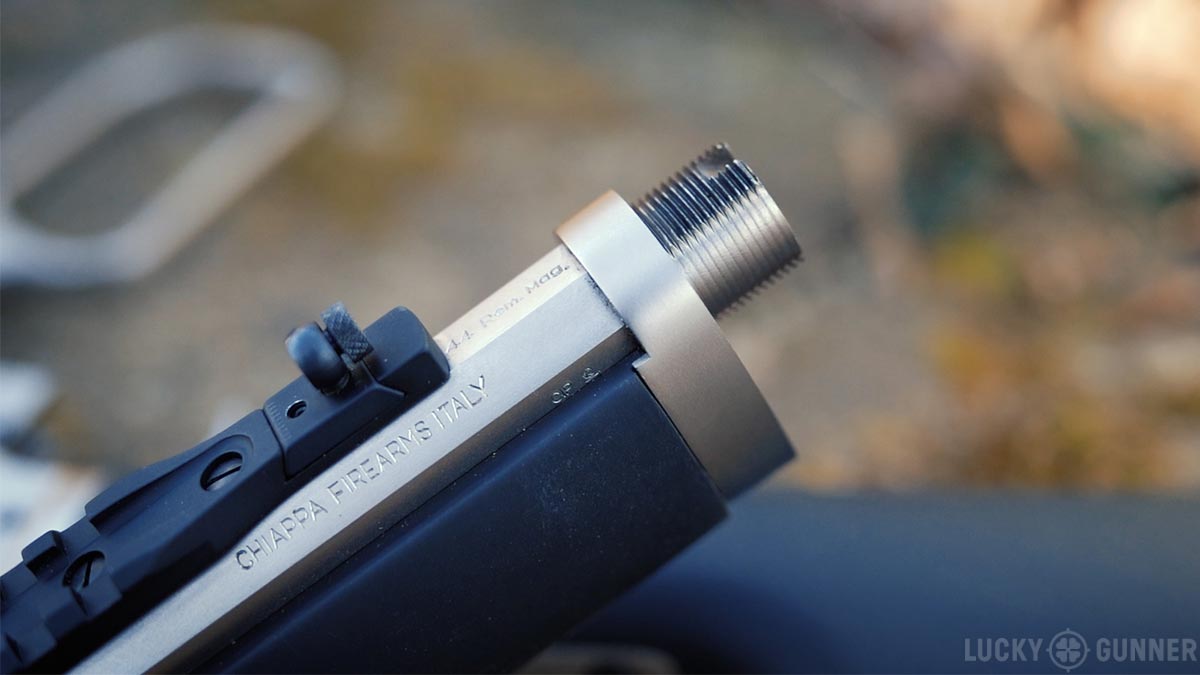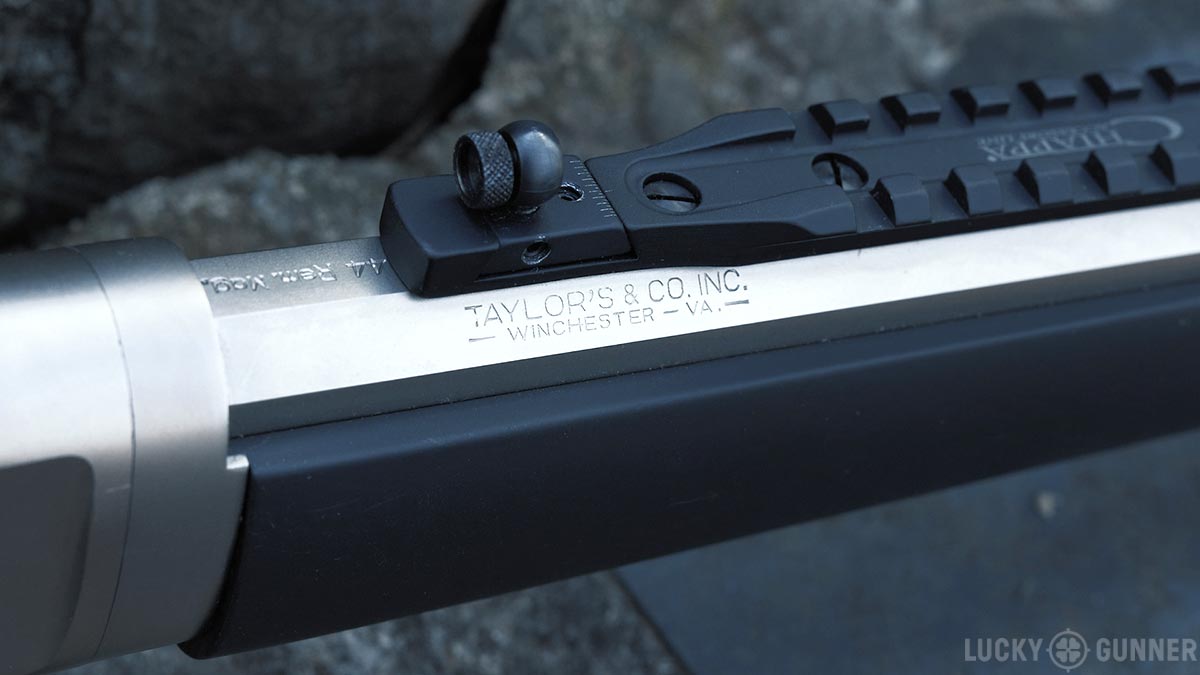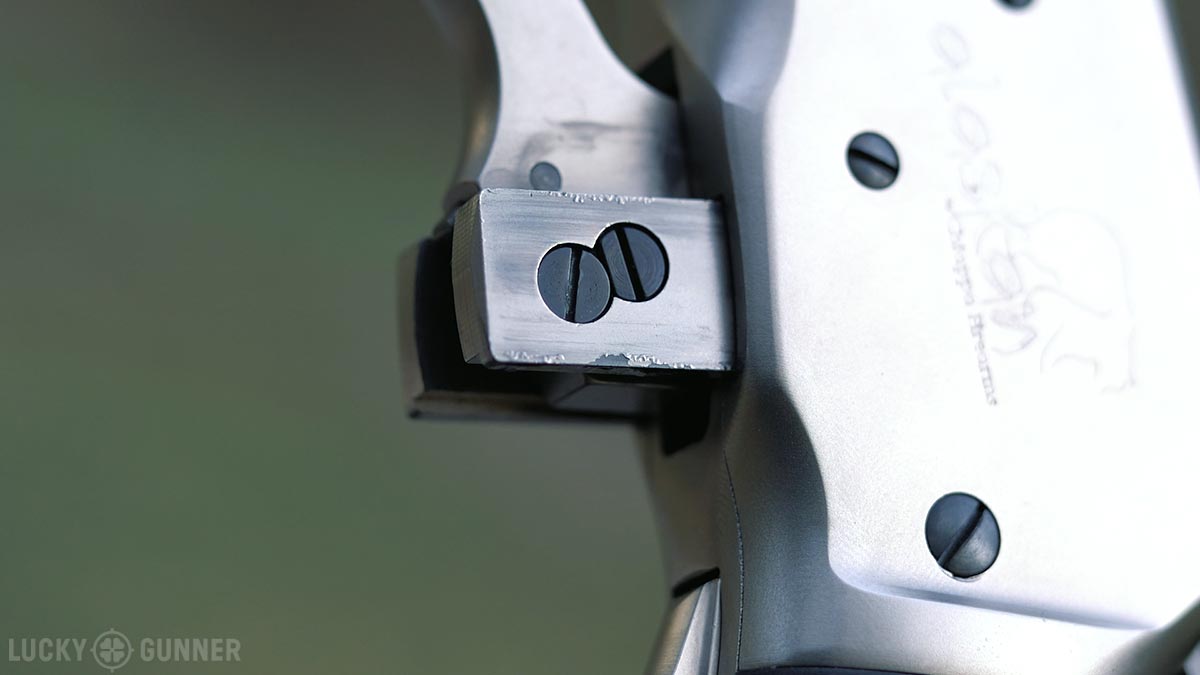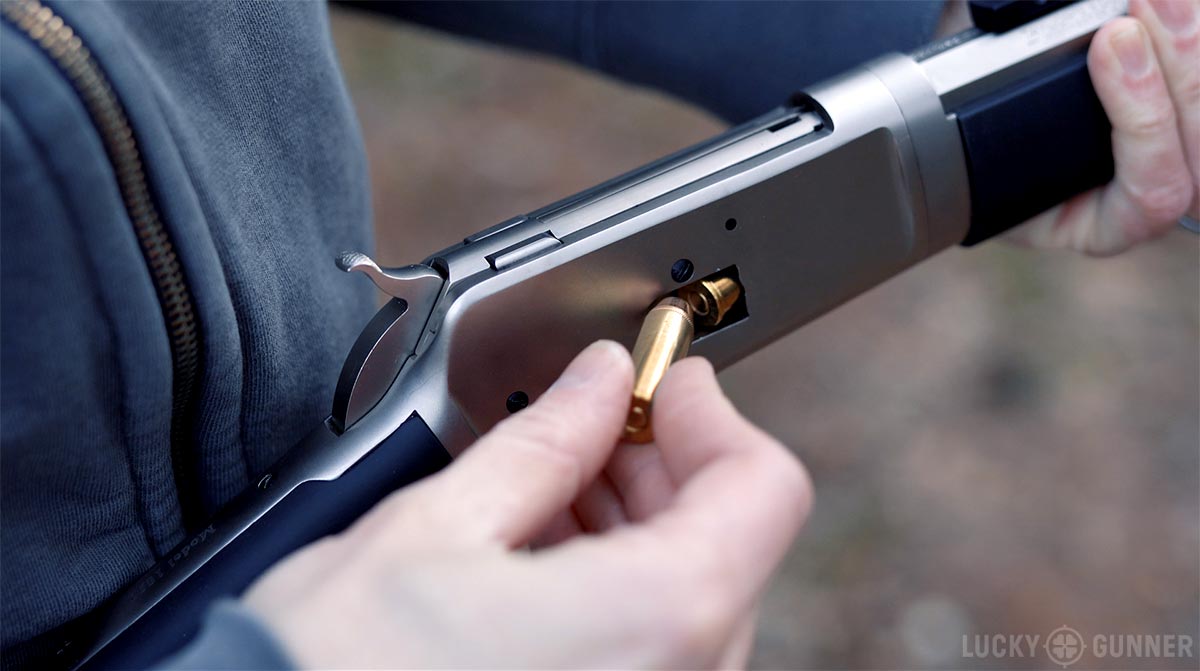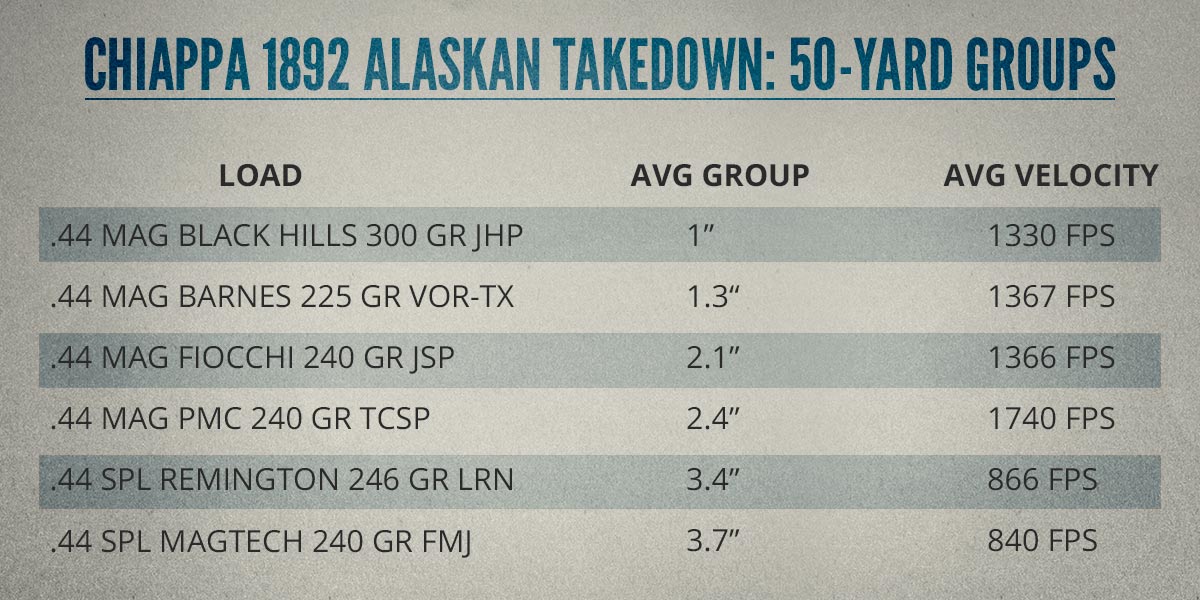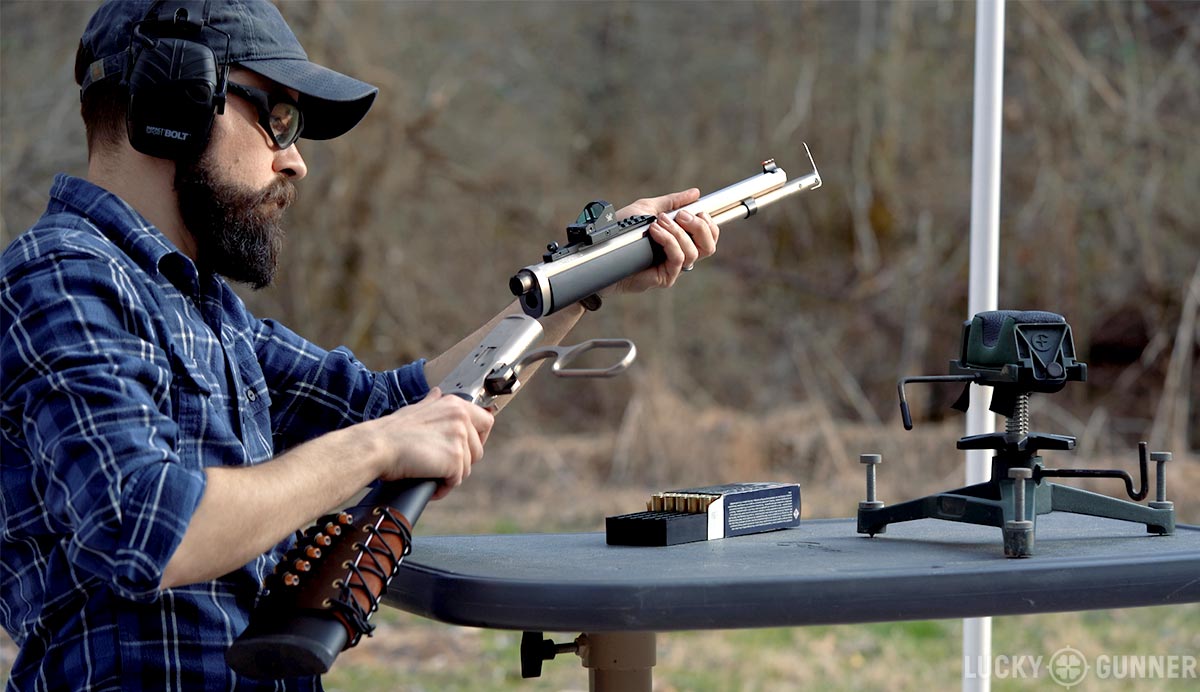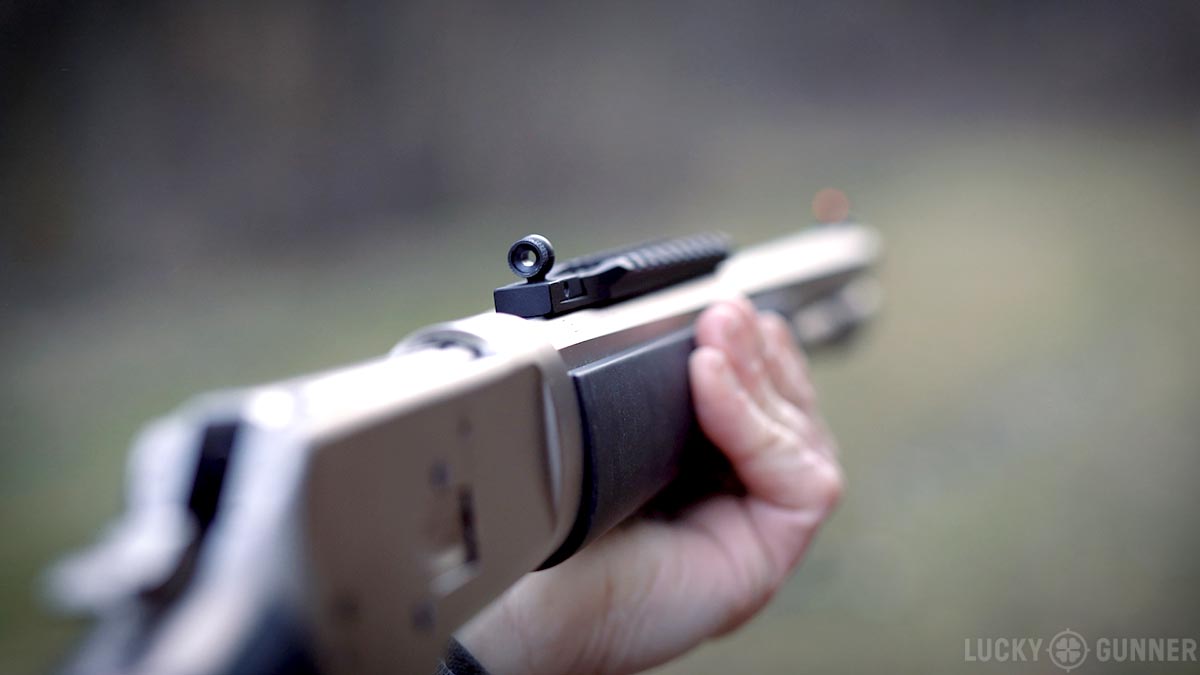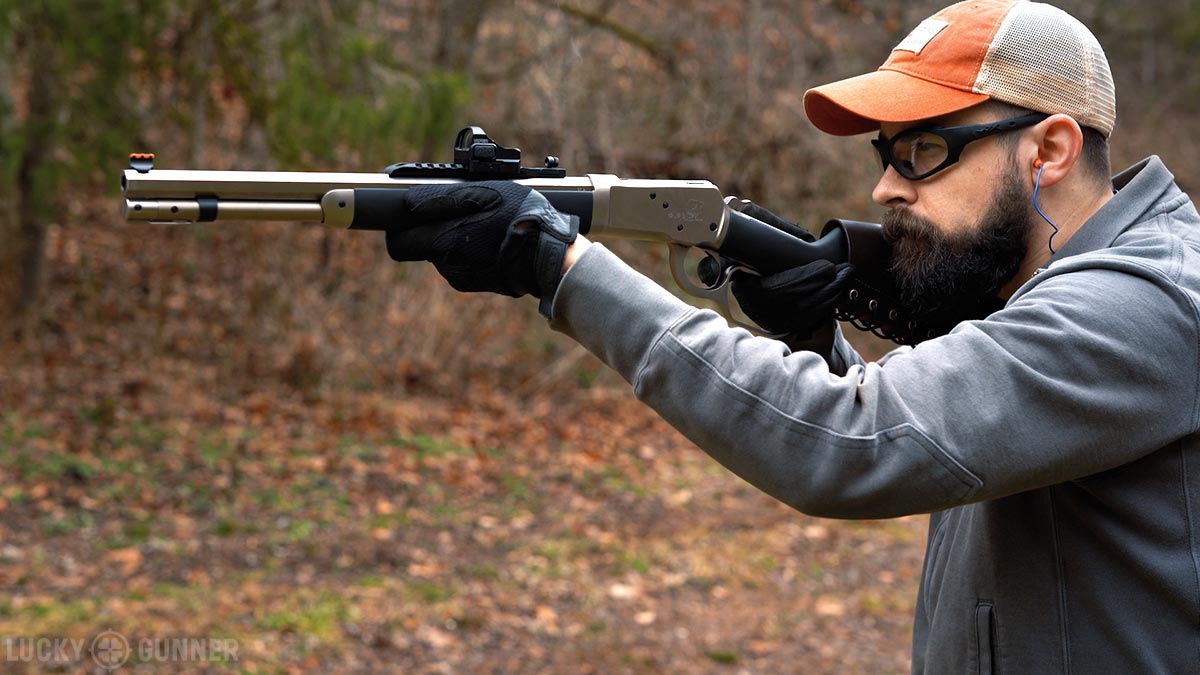In this installment of our Lever Action Rifle Series, we’ve got a review of the .44 Magnum Chiappa 1892 Alaskan Takedown from Taylor’s and Company. When we hear “lever action,” most of use think of the Big Three: Marlin, Henry, and Winchester. But they’re not the only players in the lever action game. Chiappa is just one of several companies making reproductions of the classic Winchester rifles in dozens of different configurations.
Winchester made takedown versions of the 1892 almost from the beginning of the gun’s production run. The Alaskan is a modern take on that original design with some 21st century features. We did a full rundown of those features and a report on how the Alaskan performed at the range.
Details are in the video below, or scroll down to read the full transcript.
Hey everybody, Chris Baker here from LuckyGunner.com. Today, we’re taking a look at the Chiappa 1892 Alaskan takedown lever action. I showed you guys this gun briefly in our last video as one of our suggested backpack guns. I’ve had a little more time with it at the range since then, so this will be a more detailed review. Let’s get to it.
The Alaskan is made by Chiappa in Italy and imported by Taylor’s and Company. Taylor’s imports a number of lever actions, single action revolvers, and other Western style firearms. They are the exclusive distributor for the Alaskan in the US. The one they loaned us to review is a .44 Magnum with a 16-inch barrel and a matte chrome finish. The mag tube holds eight rounds.
You can also get it with a 20-inch barrel, a matte black finish, and they have it in .357 Magnum as well. At one time, there was a version with a 12-inch barrel sold in Canada, but I’m not sure if Chiappa is still making those.
If you’d prefer a rifle caliber, Taylor’s has the Chiappa 1886 Ridge Runner in .45-70. That looks like a pretty nice rifle, but it’s also a lot beefier than the Alaskan. It’s 7.8 pounds while the pistol-caliber Alaskan is only 5.9 pounds.
The New(ish) Chiappa Alaskan
This is not a new model. Taylor’s has been importing these for at least 5 or 6 years now. There have been a few minor changes to the gun in that time. The early Alaskans had either no optic rail or a Weaver style rail. The current rifles come with a picatinny rail. They still have a Skinner rear aperture sight on that rail, which I believe was a feature of the earlier guns as well.
The lever loop has changed a bit. They went from one of those extra large round loops to a slightly lower profile D-shaped loop.
And based on some videos I’ve seen of the earlier rifles, the barrel threads are a bit different as well. Let’s go ahead and look at how it breaks down.
Breaking Down the Alaskan
First, you open the action. The barrel won’t budge if the action is closed, but more importantly, I’m about to put my hand in front of the muzzle, so I want to double and triple check that the action is open and clear of ammunition before I do that.
Next, you flip out this lever at the end of the mag tube. Turn it counter clockwise until it moves freely. Then, just rotate the whole forend a quarter turn and it slides right out. This is made possibly by the interrupted thread design.
The fit between the barrel and receiver was extremely tight at first. It was difficult to join or separate the two without bracing the stock against something. Eventually, it loosened up after I took it on and off several dozen times.
I believe the earlier versions of this gun had threads that required a three-quarter turn. Not a huge difference, but the new ones are slightly more convenient.
When you remove the front half, the mag tube just sits loosely in the forend. It can slide all the way out. If you like, you can screw it back into the forend to secure it. The threads for the mag tube are in the forend, not in the receiver.
To put it back together, you just reverse the whole process. Unscrew the mag tube. Open the action. Insert the barrel and give it a quarter turn. If you don’t get it indexed just right, the mag tube won’t go back into the receiver, so you have to make sure the forend is perfectly flush with the receiver. Then screw the mag tube back in. There’s a little cutout in the bottom of the barrel and the lever won’t go back down into that recess unless the mag tube is all the way in. Flip that down. Close the action, and it’s ready to be loaded.
Taylor’s and Company sent a nylon carrying case a long with the rifle. It’s made by Unique Cases. It keeps the two halves of the gun separated and protected while you’re transporting it. There’s a little extra room in the sleeves which leaves room for something like a stock-mounted ammo carrier or an optic. There’s a big pocket on one side of the case that’s just the right size for a 50-round box of ammo. On the other side, there’s a long narrow pocket that was most likely designed with a small cleaning kit in mind. It makes for a nice little package that has most of what you would need for a quick trip to the range.
Other Takedown Lever Actions
If you’re a lever gun fan, then I don’t have to tell you that the 1892 Alaskan is named for the Winchester 1892. That’s the John Browning design this gun is based on. The Alaskan is just one of dozens of modern reproductions of the original made by several different companies. Takedown versions of this gun have also been around for a long time — at least since 1893. However, as far as I know, the Chiappa Alaskan is the only takedown version of the 1892 in current production.
In fact, there are not many takedown lever actions being made today, period. Chiappa has the Alaskan and the Ridge Runner and they also have the LA322 which is a takedown .22 LR. Last year, Chiappa announced a series of takedowns called the Wildlands rifles that looked very similar to the Alaskan and the Ridge Runner, but I don’t think many of those have made it into the country just yet. Winchester is now doing a takedown Model 94 they call the Trails End. There’s a takedown version of the Browning BLR in a bunch of different rifle calibers. I’m sure someone will correct me on this, but I think those might be the only options unless you want to go the custom route or find something that’s out of production.
Out of all of those takedowns I just mentioned, the Alaskan and the Wildlands are the only rifles chambered for pistol cartridges. If you’ve been following our lever action series then you know I have a fondness for pistol caliber lever guns in general. I also have a fondness for takedown rifles in general. But I have to admit — when I started looking into it and discovered that the only real option for a .44 Magnum takedown comes from Chiappa, I was a little skeptical.
I did not have any prior experience with Chiapa’s lever actions and I wasn’t sure what to expect. The only thing from Chiappa I’ve really paid much attention to at all is the Rhino double action revolver. That gun has an overly-complex design and hit-or-miss reliability.
On the other hand, this is a totally different animal. It’s a 130 year old design with numerous improvements and revisions over the years. Theoretically, it should be much easier to build a quality 1892 clone compared to something novel like the Rhino.
I also thought the Alaskan had an impressive set of features for a practical modernized lever action. Not to mention, it’s just a really nice looking gun. That’s not something I normally prioritize, but if you’re going to use an antiquated piece of technology like a lever action, you should at least look good doing it.
Some Potential Improvements
So I tried to keep an open mind about the Chiappa Alaskan and I’m glad I did because it has turned out to be a very enjoyable gun. But there are a few things I would probably modify or change if I was going to use it long-term. Those are mostly matters of preference. Then there are a couple of minor issues that you could call actual defects. I’ll run through all that stuff first and then I’ll come back to why I think it’s a good rifle anyway and we can end on a high note.
The first thing I’d change is the lever loop. I really don’t care for the large loops like this one. They’re not comfortable to use unless you have on heavy gloves and they make the action a little more difficult to run quickly without short stroking. Fortunately, Taylor’s does sell a standard size loop for these rifles, so there’s a pretty straightforward solution to that problem.
I would also do something about the length of pull. It is 14 inches and I would cut it down to about 12 and a half or 13 inches. I prefer a shorter length of pull because of the way I shoot rifles. It’s also a lot easier to shoot a rifle with a stock that’s too short than one that’s too long. Like I mentioned in my review of the Henry X Models, a shorter stock would make the gun usable for a wider range of people. Pistol caliber lever actions are great for younger or small-statured shooters because of the low recoil, so a shorter stock makes sense for them as well.
A gunsmith could shorten the stock for you, and it’s not too difficult to do yourself, either. I’ve done it before without too much trouble. This stock is wood with a soft rubber coating on it. I would imagine if you scored through the rubber with a knife before chopping the stock, you could get a clean cut just fine. The rubber buttpad looks like it could be sanded down to fit.
Chopping the stock would also make the gun that much more compact when it’s broken down. The barrel half is right at 16 inches long exactly. The receiver half is 19 inches long. So the shorter you go with the stock, the less overall space you need to store or transport both halves.
The last modification I’d make is the addition of some kind of sling mounts. It would be easy enough to drill a hole for a sling stud in the stock. The front attachment point might be a little more tricky. I’m not sure the wood in the forend is thick enough to put a sling stud there. One of the clamp-on sling studs that normally would go on the mag tube might fit around this little mag tube retaining loop here. There might be a way to run something off of the picatinny rail. I’m not sure, but it would probably require some kind of creative solution. One way or another, the gun really needs a sling if it’s going to get any kind of field use.
I’ve noticed a few minor issues with this rifle that I probably wouldn’t even mention if this was a $700 or $800 gun. But the MSRP for the chromed Chiappa Alaskan from Taylor’s and Company is $1581.58. If you’re lucky enough to run across one in today’s market, you very well may end up paying a lot more than that. I know that, for a lot of shooters, when they spend $1600 on a gun, they expect it to be pretty much perfect in terms of fit and finish. So this stuff might seem like nit-picking, but I’d want to know about these things before I decided to buy one.
Most of these issues are merely cosmetic and likely happened during the assembly and finishing processes. There’s one rough spot here on top of the receiver. One of the screw holes looks like it was marred by an improperly aligned screwdriver. On some of the parts that are only exposed when the action is open, the chrome finish looks like it’s flaking off or wasn’t properly applied to begin with.
One of these issues is more than just cosmetic, though. Take a close look at the loading gate. The front edge is very sharp, and because it’s sharp, it’s kind of fragile. At some point before it was shipped to me, it developed some kind of burr or ding. A lot of lever action loading gates are not particularly comfortable to use — that’s not unusual at all. But this is in this case, when you load a cartridge, it feels like your thumb is pinched by a dull serrated knife.
I was able to use the loading technique where you leave the base of each cartridge sticking out of the gate until you get to the last round. That doesn’t work so well with every rifle, but it works with the Alaskan. That saved my thumb from a lot of abuse. If it was my rifle, I would have taken a file to it immediately and rounded off that edge. It seems like a small issue, but it definitely makes the gun less fun to use.
Chiappa Alaskan Highlights
However, it is still a really fun gun, so let’s talk about the good stuff now.
The action, in particular, is one of the best things the Alaskan has going for it. It is incredibly smooth. Like any lever action, the lever stroke has different stages. You can feel different levels of resistance as you work the action. But with this gun, the parts feel like they’re just gliding off one another.
This probably doesn’t come as a surprise to fans of the Winchester 1892. That design has long been admired for its smoothness. But not every 1892 clone has managed to replicate that quality. Some of them are pretty rough and crunchy out of the box. I’m sure one of the many gunsmiths who specialize in Winchester actions could slick up an Alaskan even further. In my opinion, it’s really nice right out of the box.
The trigger is also decent. I measured it at just over 4 pounds — just right for any kind of field or practical use. When the hammer is in the cocked position, there is no slack or play in the trigger. It’s a clean break with a single-stage feel.
I’ve run about 300 rounds through the Alaskan. Like all of the guns I’ve evaluated in the last year or so, I would like to have shot it a lot more. But demand being what it is, I try to leave most of that ammo in our warehouse inventory so somebody can buy it. For what it’s worth, the gun has been completely reliable for that 300 rounds. I haven’t experienced any hiccups in the action or feeding problems of any kind.
A couple of the screws worked themselves loose after a while, but that’s almost expected with a lever action. Otherwise, I really don’t have any complaints as far as the rifle cycling, going bang, and making holes in things when I pull the trigger.
Accuracy Testing
Accuracy has turned out to be respectable by lever action standards. I’ve done most of the shooting with a Vortex Viper red dot sight mounted on the picatinny rail. This is a lightweight, short-range rifle and it pairs really nicely with an optic that’s also lightweight and best suited for short distances.
As a side note, the Viper would not necessarily be my top pick if I was buying a red dot today. It’s an older design and among other things, it has to be manually turned on every time you want to use it. But it was laying around and wasn’t in use, so it worked fine for trying out the Alaskan.
I shot some groups from the bench at 50 yards with six different loads. The best 5-round groups were between about an inch and an inch and a half. That was with Black Hills 300-grain JHP and Barnes 225-grain Vor-TX. The groups with the more everyday kind of range ammo were about an inch larger than that. I also tried a couple of .44 Special loads and those averaged around 3 and a half inches.
So if you load the Alaskan with premium hunting ammo, you can probably expect something like 2 to 3 MOA accuracy. That’s not bad at all for a pistol caliber carbine. And it’s plenty accurate for the effective range of the .44 Magnum cartridge.
I also shot a few groups where I removed and reattached the barrel in between groups to see if that would affect the zero. Since the optic attaches to the barrel-half of the gun, I didn’t expect that to cause any major issues. The groups I fired seemed to confirm that. They were all in roughly the same place relative to the aiming point.
Sights and Optics
Despite the fact that I kept a red dot mounted on this rifle for most of the range work I did with it, I do appreciate the iron sights that were included from the factory. I know the fiber optic front sight is not everybody’s cup of tea. I like fiber optics, though. If you’re not going to go all out with a tritium insert, a fiber optic is probably the next best thing. The Skinner rear sight is adjustable for windage and elevation. You can also unscrew the aperture insert and either use it as a big ghost ring, or buy a different size aperture from Skinner if you prefer.
The only real downside to this setup is that it’s not ideal if you want to run a magnified long eye relief scope. You would have to either remove the rear sight to make room for that, or use tall scope rings so that the optic clears the sight. But if you use the taller rings, you’re going to lose your cheek weld and you’ll need a comb riser for the stock. That’s kind of a pain, but it’s not an unusual problem to run into with the open-top Winchester-style actions. I’d like to think that’s just the ghost of John Moses Browning telling you to stick with a red dot or iron sights on a pistol caliber lever action.
“This Is My Safety.”
Chiappa has not added any kind of manual safety to their 1892 clones. It does have a half-cock position. When you manually decock the hammer, if you take your finger off the trigger after you release the hammer, you can lower it into the half cock notch. In this position, the hammer is not in contact with the firing pin. If you plan to walk around with a round in the chamber, the hammer should be in the half-cock position, not fully cocked.
Matte Chrome Finish
The hard chrome finish has held up pretty well so far. I don’t think I’m particularly hard on guns, but I don’t baby them, either. After a few weeks of shooting and handling a new gun, it usually has a few minor dings and scratches on the finish somewhere. The metal on the Alaskan looks pretty much exactly the way it did when I took it out of the box. It has certainly proven to be more resilient than the typical stainless finish. It also seems easier to keep clean. The carbon residue just wipes right off most of the time.
I’m not sure what they’re using for the finish on the matte black version of this gun. It might be something just as durable, but I doubt it. The matte chrome Alaskan is about $170 more and I think it’s a worthwhile upgrade if you want to keep your gun looking nice without much effort.
A Good Value?
As with any gun that carries the kind of price tag this one does, at this point, a lot of you are going to be asking the question, “is it worth it?” I guess that depends on how badly you want a takedown pistol caliber lever action. You don’t have to spend $1600 to get a really good lever action rifle. But you most likely will have to spend at least $1600 for a takedown lever action chambered in .44 or .357 Magnum. Whether you go with this gun or a used out of production model or have a custom shop perform a takedown conversion on your existing rifle — none of those options are going to be cheap. And they each have their pros and cons.
What I would say is if you’ve already got your heart set on a takedown, the Chiappa Alaskan has a lot going for it, especially if you gravitate toward the lever actions with more modern features. I would not let the fact that it’s not a Marlin or a Henry or a Winchester turn you off. Yes, there were a couple of minor flaws with this particular sample. But it’s nothing we haven’t seen from any of those other companies on occasion.
The Chiappa 1892 Alaskan is every bit as fun and reliable as any of the other guns I’ve used in the lever action series so far. The biggest problem with these things is just how difficult they are to find right now. Just like everyone else in the industry, Chiappa is having a tough time keeping up with demand these days. But the Alaskan is still in production, and if you’re patient, you can probably track one down.
The post A Packable Lever Action: The Chiappa 1892 Alaskan Takedown appeared first on Lucky Gunner Lounge.



